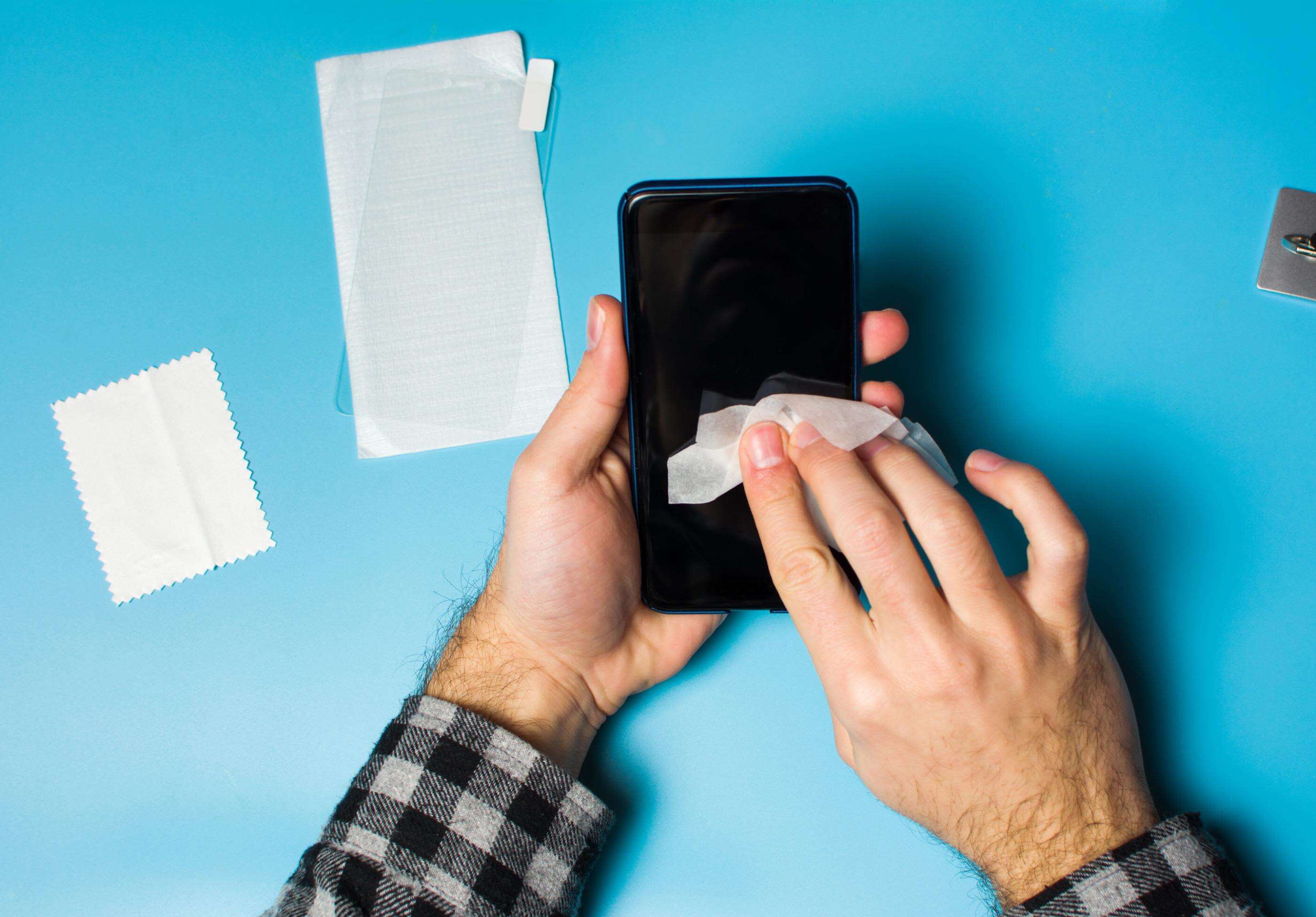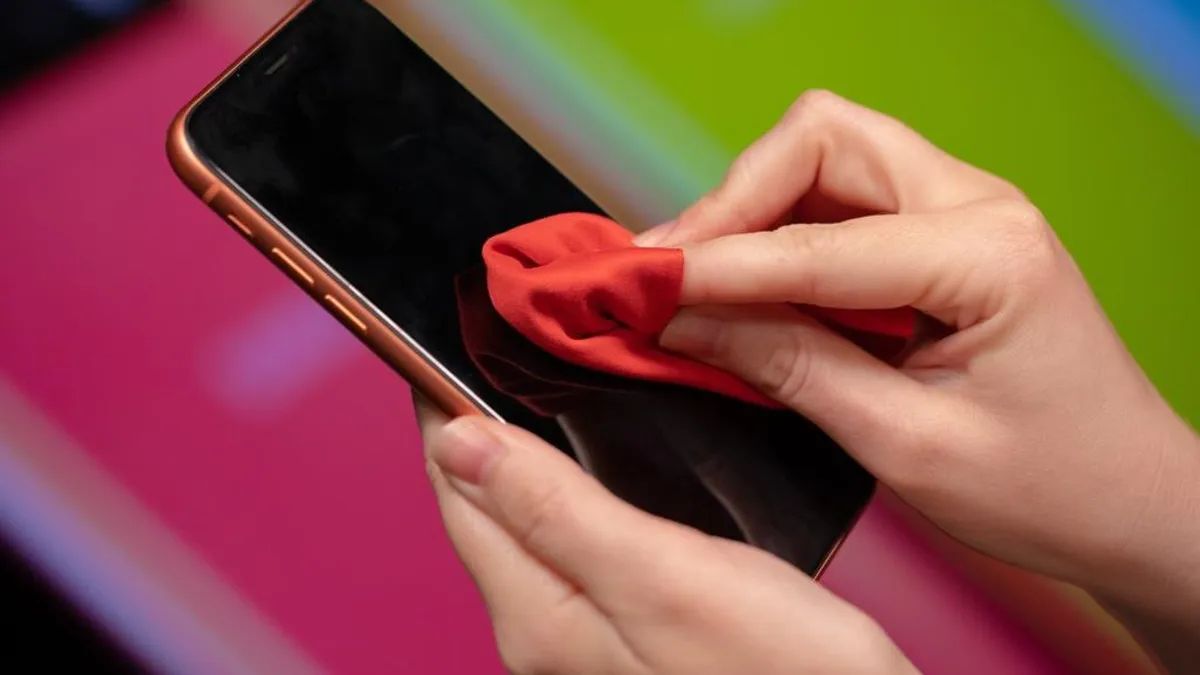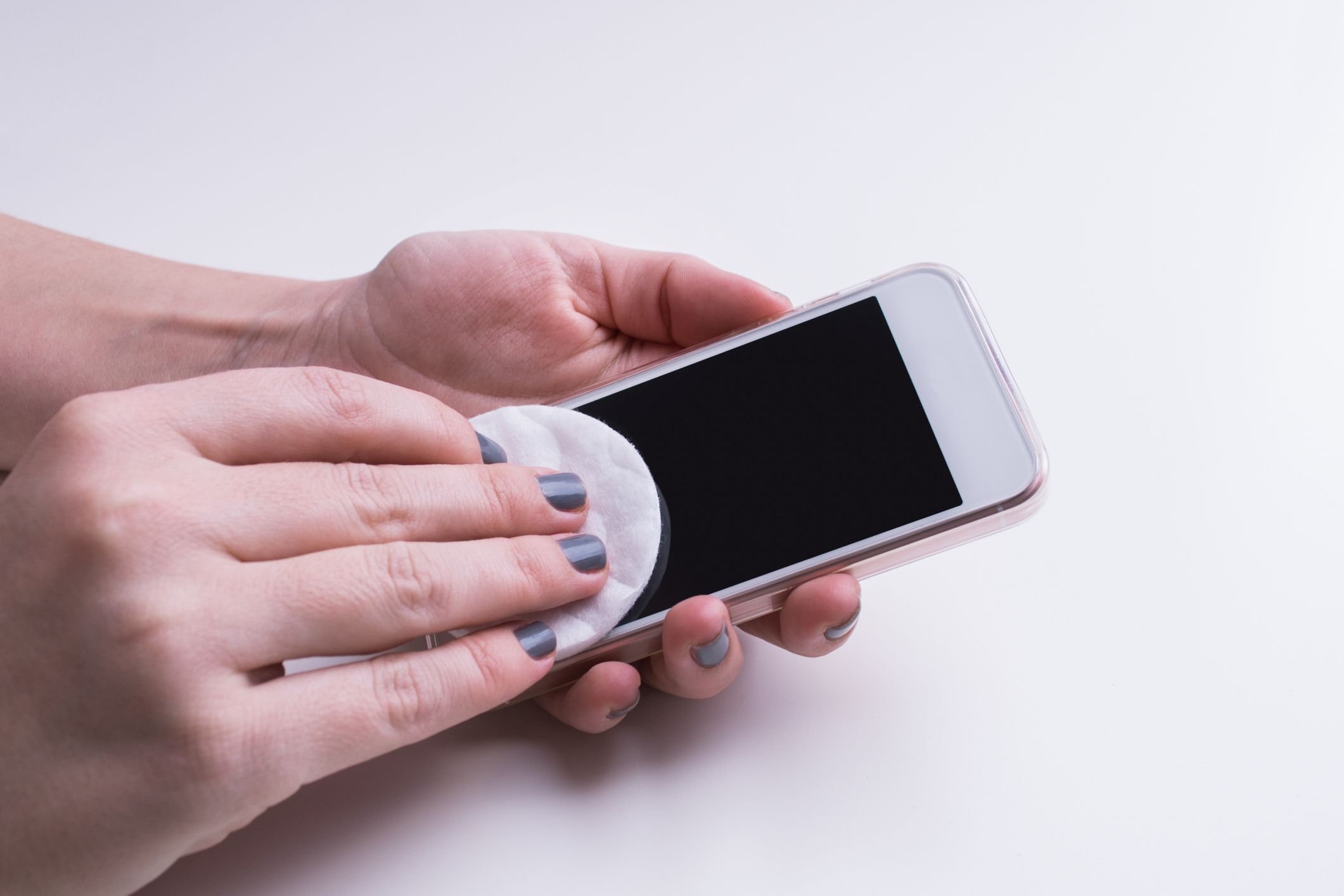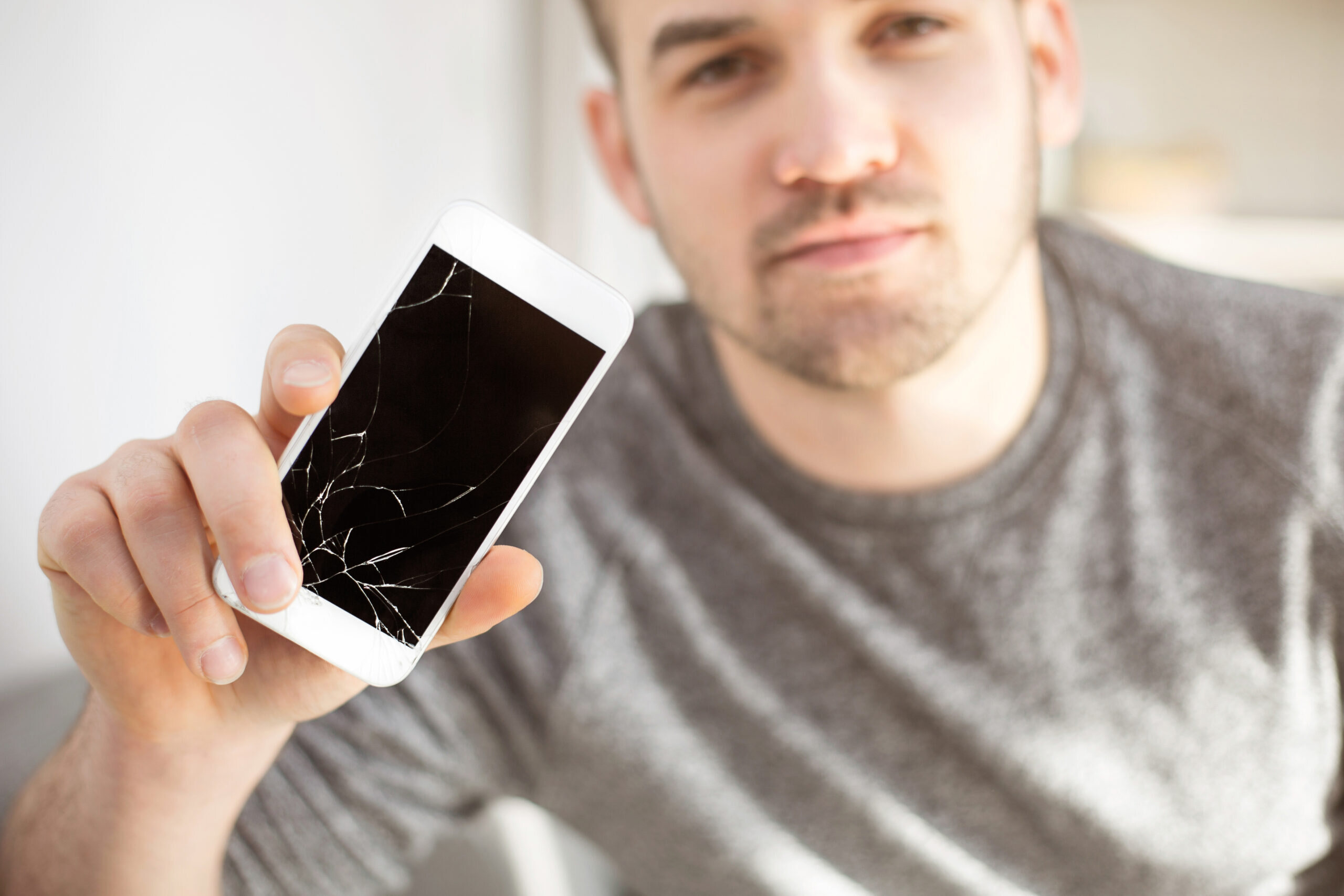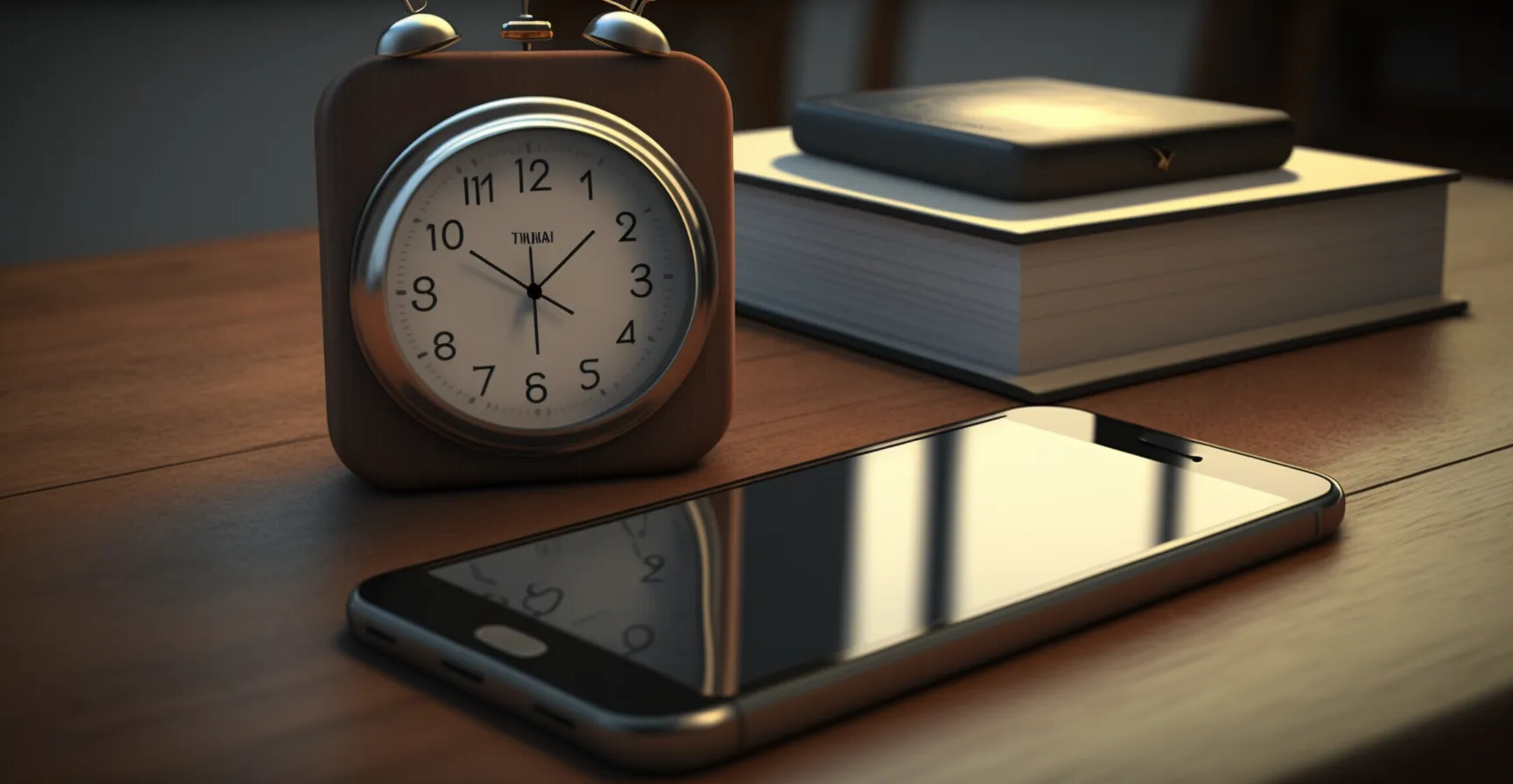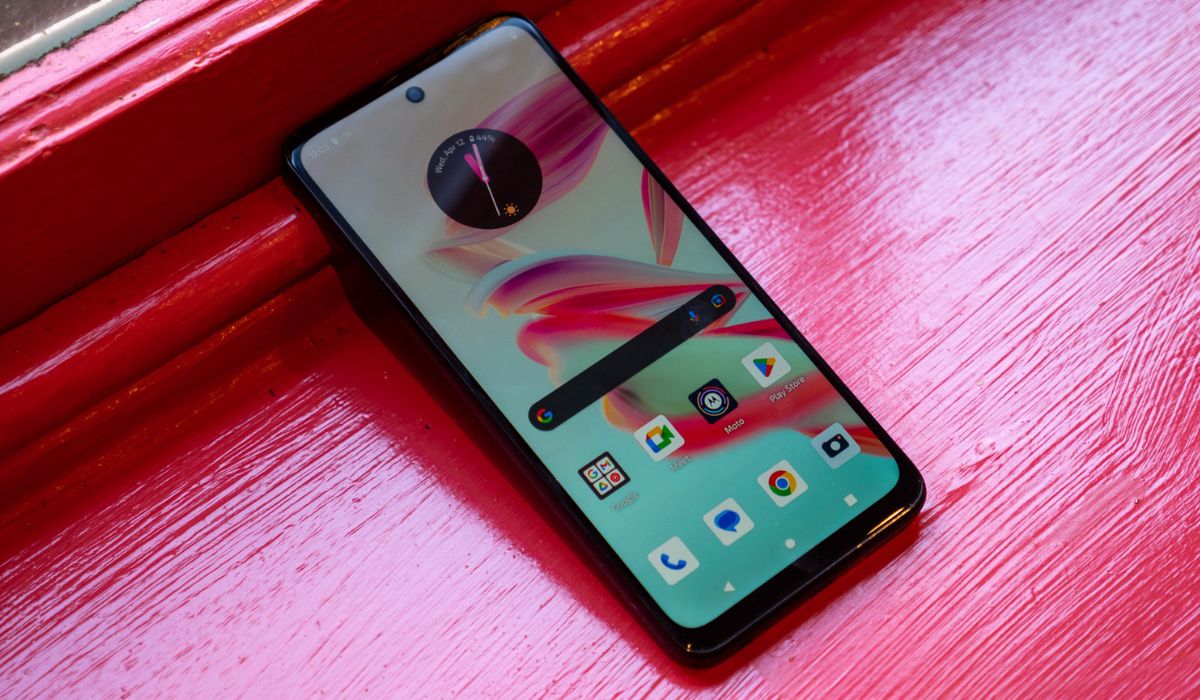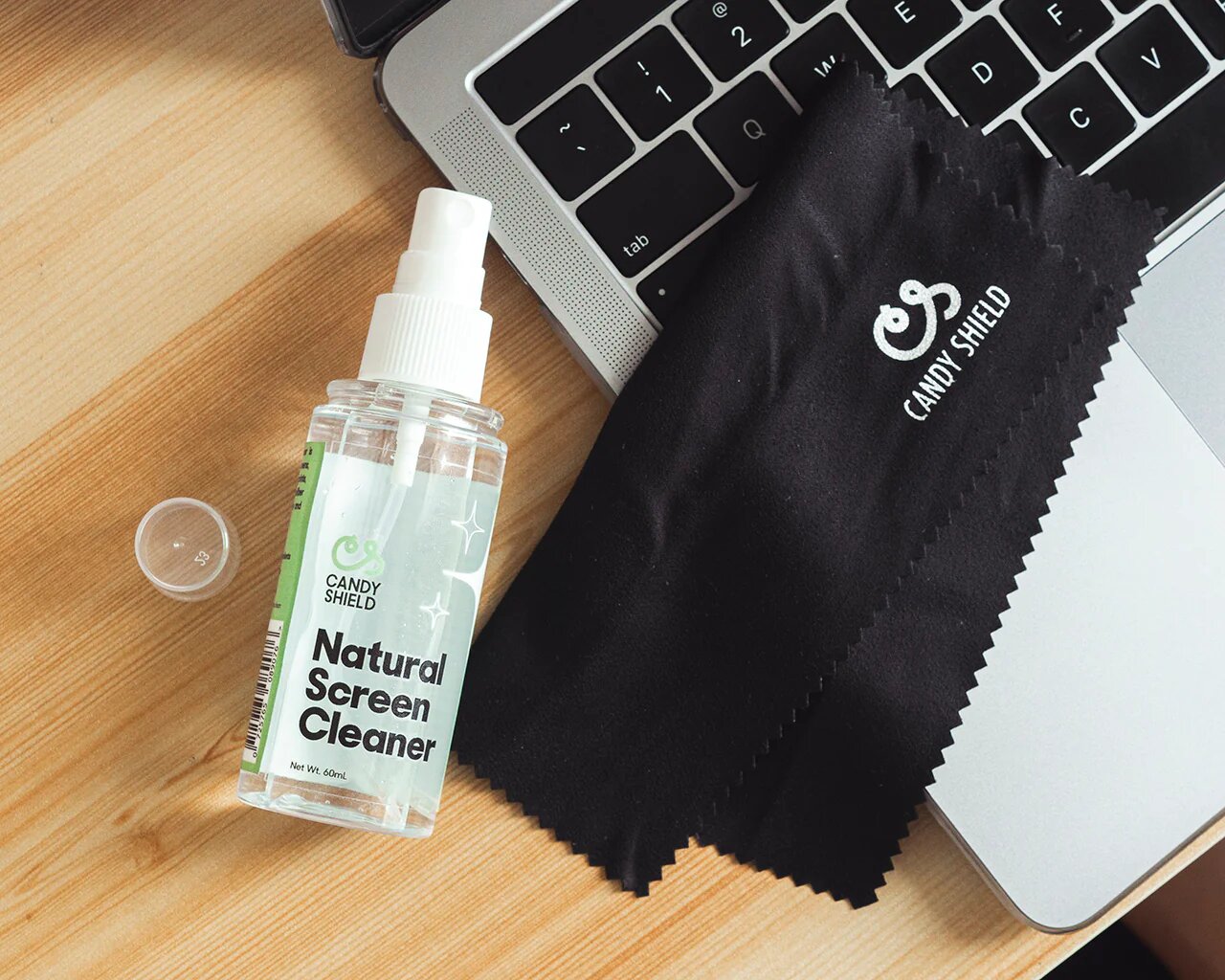Introduction
Welcome to our guide on how to clean a smartphone screen! In this digital age, our smartphones have become an essential part of our daily lives. We rely on them for communication, entertainment, and so much more. With constant use, our smartphone screens can quickly accumulate dirt, fingerprints, and smudges, affecting both the visual clarity and touch sensitivity of the device.
Regularly cleaning your smartphone screen not only improves its appearance but also helps to maintain its functionality and extend its lifespan. However, it’s crucial to know the right methods and tools to use when cleaning your smartphone screen. Cleaning it improperly can potentially damage the screen, rendering your device less effective and reducing its resale value.
In this guide, we will walk you through the step-by-step process of safely and effectively cleaning your smartphone screen, ensuring that it remains sparkling clean and in optimal condition. Whether you have an iPhone, Android device, or any other smartphone brand, the cleaning techniques shared in this guide are applicable to all types of smartphone screens.
Before we dive into the cleaning process, it’s important to note that you should always refer to your smartphone’s manual or manufacturer’s website for any specific cleaning instructions or precautions. With that said, let’s get started and learn how to give your smartphone screen the care it deserves!
Importance of Cleaning Your Smartphone Screen
Keeping your smartphone screen clean is essential for several reasons. Here are some key reasons why regular cleaning is crucial:
- Enhanced Visual Clarity: A clean screen ensures optimal visual clarity, allowing you to enjoy a crisp and vibrant display. Removing dirt, smudges, and fingerprints improves the overall viewing experience, whether you’re watching videos, browsing social media, or playing games on your smartphone.
- Improved Touch Sensitivity: Over time, dirt and debris can accumulate on the screen, affecting its touch sensitivity. Regular cleaning helps to maintain the responsiveness of your smartphone’s touch screen, ensuring smooth and accurate interactions with your device.
- Hygiene and Health: Smartphones are known to harbor various germs and bacteria due to frequent handling. Cleaning your smartphone screen reduces the risk of transferring these germs to your hands and face, promoting better hygiene and reducing the chances of illness.
- Preservation of Screen Quality: Dust particles and debris on the screen can cause scratches and abrasions over time, compromising the overall quality of the screen. By cleaning your smartphone screen regularly, you can minimize the risk of damage and help preserve its longevity.
- Enhanced Aesthetics: A clean and smudge-free screen simply looks better. Regularly cleaning your smartphone screen helps to maintain its pristine appearance, ensuring that your device always looks its best.
It’s worth noting that cleaning your smartphone screen becomes even more important if you use a screen protector. A dirty screen combined with a screen protector can create a less than optimal user experience, with reduced clarity and potentially decreased touch sensitivity.
By taking the time to clean your smartphone screen regularly, you can prolong the life of your device, improve your overall user experience, and keep your phone looking and functioning like new. Now that we understand the importance of cleaning our smartphone screens, let’s move on to the next section, where we will discuss the things you will need to effectively clean your smartphone screen.
Things You Will Need to Clean Your Smartphone Screen
Before you begin cleaning your smartphone screen, it’s important to gather the necessary tools and materials. Here are the items you’ll need:
- Microfiber Cloth: A microfiber cloth is the ideal tool for cleaning your smartphone screen. It is soft, lint-free, and won’t scratch or damage the screen. Make sure you have a clean microfiber cloth specifically designated for screen cleaning.
- Isopropyl Alcohol or Screen Cleaning Solution: For tougher stains or smudges, you may need to use a cleaning solution. Isopropyl alcohol or a specialized screen cleaning solution can be effective. However, be mindful not to apply the liquid directly to the screen. Instead, lightly dampen the microfiber cloth with the solution.
- Water: If you prefer a more natural approach, you can use distilled water to dampen the microfiber cloth. This can still be effective in removing smudges and dirt from your smartphone screen.
- Cotton Swabs or Toothpicks: These can be handy for cleaning hard-to-reach areas like the edges and corners of the screen. Ensure that the cotton swabs or toothpicks are clean and free of any sharp edges that could potentially damage the screen.
- Compressed Air: If there is stubborn dust or debris on your smartphone screen, using compressed air can help dislodge it. However, be cautious not to hold the can too close to the screen to avoid damaging the device.
It’s important to note that different smartphone manufacturers may have specific recommendations for cleaning their screens. Always refer to your device’s manual or manufacturer’s website for any specific instructions or precautions before using certain cleaning solutions or methods.
Now that you have all the necessary tools and materials ready, let’s move on to the step-by-step process of cleaning your smartphone screen.
Step 1: Turn off Your Smartphone
Before you start cleaning your smartphone screen, it’s important to turn off your device. Turning off your smartphone eliminates the risk of accidentally triggering any buttons or functions while you clean the screen.
Turning off your smartphone also allows you to see the screen more clearly without any distractions or movements caused by notifications or incoming calls. This will enable you to focus on cleaning the screen effectively.
To turn off your smartphone, simply press and hold the power button until the power options appear on the screen. Then, select the option to power off or shut down your device.
It’s worth mentioning that if you’re unable to turn off your smartphone due to a malfunctioning power button or other technical issues, proceed with caution when cleaning the screen. Avoid pressing any buttons or applying excessive pressure to prevent any unintended actions on your device.
Once your smartphone is turned off, you’re ready to move on to the next step – using a microfiber cloth to clean the screen. Let’s dive into the specifics of this step in the next section.
Step 2: Use a Microfiber Cloth
Now that your smartphone is turned off, it’s time to clean the screen using a microfiber cloth. A microfiber cloth is perfect for cleaning smartphone screens because it is gentle, lint-free, and will not scratch or damage the surface.
To clean your smartphone screen with a microfiber cloth:
- Take the microfiber cloth and unfold it, ensuring you have a clean surface to work with.
- Gently wipe the screen using the cloth in a circular motion. Start from the top of the screen and work your way down. This helps to remove any loose dust or particles on the screen.
- Be sure to apply gentle pressure as you wipe to avoid pressing too hard on the screen.
- If you notice smudges or fingerprints that require more attention, focus on those areas and continue to gently wipe them until they are removed.
Using a microfiber cloth is generally enough to clean most smudges and dirt from your smartphone screen without the need for additional cleaning solutions. However, for more stubborn stains or marks, you may need to proceed to the next step and dampen the cloth with a cleaning solution or water.
Remember, it’s important to use a clean microfiber cloth dedicated solely to screen cleaning. Avoid using rough materials, such as paper towels or tissues, as they can cause scratches on the screen surface.
Now that you’ve successfully cleaned your smartphone screen using a microfiber cloth, it’s time to move on to the next step and learn how to dampen the cloth for more stubborn stains or smudges.
Step 3: Dampen the Cloth
If there are stubborn stains or smudges on your smartphone screen that cannot be removed with a dry microfiber cloth, you may need to dampen the cloth with a cleaning solution or water. Here’s how to do it:
- If you’re using a screen cleaning solution, lightly spray it onto the microfiber cloth. Be careful not to directly spray the solution onto the screen to avoid any liquid seeping into the device.
- If you prefer a more natural approach, you can moisten the cloth with distilled water. Avoid using tap water, as it may contain minerals that could leave streaks or residue on the screen.
- Ensure that the cloth is damp, not dripping wet. Excessive moisture can be harmful to your smartphone and may seep into the device, causing damage.
Once you have dampened the cloth with the cleaning solution or water, gently squeeze out any excess liquid to ensure it is not overly saturated. The cloth should be damp enough to effectively clean the screen, but not dripping with moisture.
Remember, when using cleaning solutions, it’s crucial to follow the instructions provided by the manufacturer and refer to your device’s manual to avoid using any solutions that could damage the screen or its coating.
With the cloth appropriately dampened, you’re ready to move on to the next step – gently wiping the screen to remove those stubborn stains or smudges. We’ll cover this step in detail in the upcoming section.
Step 4: Gently Wipe the Screen
Now that you have a dampened microfiber cloth, it’s time to gently wipe the screen of your smartphone to remove any stubborn stains or smudges. Here’s how to do it:
- Take the damp microfiber cloth and start by wiping the screen in a gentle, circular motion.
- Begin at the top of the screen and work your way down, ensuring you cover the entire surface area.
- Apply gentle pressure while wiping, but avoid pressing too hard on the screen to prevent any damage.
- Focus on areas where there are visible stains or smudges, and continue to wipe them gently until they are removed.
- If there are any stubborn marks that aren’t easily removed, don’t apply excessive force. Instead, move on to the next step and try a different method to target those specific areas.
While wiping the screen, periodically check the microfiber cloth to see if it becomes dirty or saturated with any residue. If necessary, you can dampen and clean the cloth again before continuing to wipe the screen.
Take your time during this step to ensure that you thoroughly clean the entire screen, paying attention to corners and edges where dirt and debris tend to accumulate.
Remember, the goal is to gently remove the stains and smudges without causing any damage to the screen. Applying excessive pressure or using abrasive materials can result in scratches or other harm to your smartphone.
Once you have wiped the entire screen and removed the visible stains and smudges, you can proceed to the next step, which involves paying attention to the edges and corners of the screen. We’ll discuss this step in detail in the upcoming section.
Step 5: Pay Attention to the Edges and Corners
When cleaning your smartphone screen, it’s important to pay special attention to the edges and corners. These areas are often overlooked but can accumulate dust, dirt, and smudges over time. Here’s how you can effectively clean the edges and corners of your smartphone screen:
- Take your microfiber cloth and fold it to create a smaller, more precise cleaning surface.
- Gently swipe along the edges and corners of the screen, ensuring you reach every corner and crevice.
- Use gentle, circular motions to remove any dirt or smudges that may be present.
- If you notice any stubborn debris that is difficult to remove, you can use a clean cotton swab or toothpick to carefully dislodge it.
- Remember to be extremely cautious when using a cotton swab or toothpick, as excessive pressure or mishandling can result in damage to the screen.
The edges and corners of your smartphone screen are areas where dust and dirt tend to accumulate, so it’s important to give them extra attention. Taking the time to clean these areas thoroughly will help ensure a pristine and visually appealing screen.
Once you are satisfied with the cleaning of the edges and corners, proceed to the next step, which involves drying the screen. We’ll delve into this step in detail in the following section.
Step 6: Dry the Screen
After cleaning your smartphone screen, it’s essential to properly dry it to remove any moisture or residue left behind. Drying the screen ensures that it is clear, streak-free, and ready for use. Here’s how to dry your smartphone screen effectively:
- Take a dry, clean microfiber cloth and gently pat the screen to absorb any remaining moisture.
- Avoid rubbing the screen vigorously or using excessive force, as this can potentially scratch or damage the surface.
- Continue to pat the screen until it feels dry to the touch, paying special attention to any areas that may still be damp.
- Ensure that the screen is completely dry before turning your smartphone back on or placing it in a protective case.
Patience is key during the drying process, as rushing it can leave behind streaks or smudges on the screen, undoing the cleaning you’ve just completed. Take your time and make sure the screen is thoroughly dried.
If you notice any streaks or residue after drying, you can go back and use a clean, dry portion of the microfiber cloth to gently buff the screen. This can help remove any remaining marks and leave the screen looking pristine.
By properly drying the screen, you’ll ensure that your smartphone is ready for immediate use without any disruption caused by moisture or residue. Now that the screen is dry, let’s move on to the next step, which involves using screen cleaning solutions sparingly, if necessary.
Step 7: Use Screen Cleaning Solutions Sparingly
While a microfiber cloth is often sufficient for cleaning your smartphone screen, there may be instances where you need a little extra cleaning power. In such cases, you can use screen cleaning solutions, but it’s important to use them sparingly and with caution. Here’s how to use screen cleaning solutions effectively:
- Choose a screen cleaning solution specifically designed for electronic devices or use a mixture of isopropyl alcohol and distilled water.
- Apply a small amount of the cleaning solution onto a clean, lint-free microfiber cloth. Be cautious not to apply the solution directly to the screen, as the liquid can find its way into the device and cause damage.
- Gently wipe the screen using the dampened cloth, focusing on areas with tough stains or smudges.
- Use gentle, circular motions and apply light pressure while wiping, ensuring not to press too hard onto the screen.
- Once you have cleaned the screen with the solution, use a clean, dry microfiber cloth to wipe away any excess moisture.
It’s important to note that excess moisture or cleaning solution can seep into the device, potentially causing damage to internal components. Therefore, it’s crucial to use screen cleaning solutions sparingly and ensure the cloth is only lightly dampened.
Additionally, be cautious when using screen cleaning solutions on screens with special coatings, such as oleophobic coatings. These coatings help repel fingerprints and smudges but can be damaged by harsh cleaning agents. Always refer to your device’s manual or manufacturer’s instructions for any specific cleaning recommendations or precautions.
If you prefer a more natural approach, you can also opt to use distilled water to dampen the microfiber cloth for cleaning. Distilled water is a safer alternative and can effectively remove many smudges and stains from your smartphone screen.
Now that you have learned how to use screen cleaning solutions sparingly, let’s move on to the next step, where we will discuss common mistakes to avoid when cleaning your smartphone screen.
Step 8: Avoid Common Mistakes When Cleaning Your Smartphone Screen
When cleaning your smartphone screen, it’s important to avoid common mistakes that could potentially damage your device or hinder the cleaning process. Here are some common mistakes to avoid:
- Using harsh cleaning agents: Avoid using abrasive or harsh cleaning agents, such as ammonia-based cleaners or bleach. These can damage the screen and its coatings.
- Applying excessive pressure: Pressing too hard on the screen can lead to scratches or damage. Always use gentle, light pressure when wiping or cleaning.
- Using rough materials: Avoid using rough materials like paper towels, tissues, or abrasive cloths to clean the screen. These can leave scratches and lint behind.
- Applying cleaning solutions directly to the screen: Never spray or pour cleaning solutions directly onto the screen. This can cause the liquid to seep into the device and damage it. Always apply the solution to a cloth first.
- Not turning off the device: Cleaning a turned-on device increases the risk of accidental button presses or liquid damage. Always turn off your smartphone before cleaning the screen.
- Using excessive moisture: Avoid using excessive moisture when dampening the cloth or cleaning solution. Too much liquid can damage the device and leave streaks on the screen.
- Cleaning in direct sunlight or extreme temperatures: Avoid cleaning your smartphone screen in direct sunlight or extreme temperatures. High heat or cold can affect the screen’s performance and potentially damage it.
- Ignoring manufacturer recommendations: Always refer to your device’s manual or manufacturer’s website for any specific cleaning instructions or precautions. Different devices may require different cleaning methods.
By avoiding these common mistakes, you can ensure that your smartphone screen cleaning process is safe, effective, and avoids any potential damage to your device.
With these tips and steps in mind, you are now equipped with the knowledge to effectively clean your smartphone screen and maintain its pristine condition. Regular cleaning will not only enhance your visual experience but also prolong the life of your device. Remember to follow these steps and exercise caution to keep your smartphone screen looking its best!
Conclusion
Cleaning your smartphone screen is an essential step in maintaining the functionality, performance, and overall appearance of your device. By following the steps outlined in this guide and avoiding common mistakes, you can effectively clean your smartphone screen and keep it looking and functioning like new.
Regularly cleaning your smartphone screen not only enhances visual clarity, touch sensitivity, and aesthetics but also promotes better hygiene by reducing the presence of germs and bacteria. It helps preserve the quality of your screen, preventing scratches and damage that can compromise its performance and lifespan.
Remember to gather the necessary tools, such as a microfiber cloth, screen cleaning solutions, cotton swabs, and compressed air, before starting the cleaning process. Turn off your smartphone to avoid accidental button presses and ensure clear visibility of the screen. Use a microfiber cloth to gently wipe the screen in a circular motion, paying attention to stubborn stains or smudges.
If necessary, dampen the cloth with a cleaning solution or distilled water to tackle more challenging marks. Ensure that the cloth is only lightly dampened and avoid applying excessive moisture. Additionally, pay special attention to the edges and corners of the screen, as they tend to accumulate dirt and debris.
Once you have cleaned the screen, ensure that it is thoroughly dried using a clean microfiber cloth. Avoid using harsh cleaning agents, applying excessive pressure, or spraying solutions directly onto the screen. Follow manufacturer recommendations and avoid cleaning your smartphone screen in direct sunlight or extreme temperatures.
By implementing these best practices and taking proper care of your smartphone screen, you can enjoy a clear, vibrant, and hygienic screen for all your mobile activities. Regularly cleaning your smartphone screen will not only enhance your user experience but also contribute to its overall longevity.
Now that you have the knowledge and steps to effectively clean your smartphone screen, go ahead and give your device the care it deserves. Happy cleaning!







